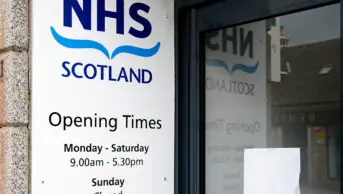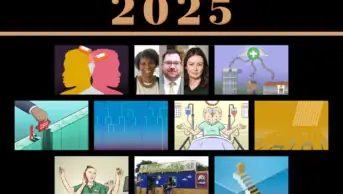
LEWIS HOUGHTON/SCIENCE PHOTO LIBRARY
When I became a pharmacy technician 38 years ago, I never dreamt of being able to final check dispensed items — certainly not aseptically prepared doses. However, over the past year, I have qualified as a product approver for an NHS aseptic unit.
In an NHS aseptic unit, product approval is the confirmation that each aseptic dose made within our facility is safe to administer and made to regulatory standards by trained staff.
As the chief pharmacy technician for an aseptic unit at East and North Hertfordshire NHS Trust, I primarily provide chemotherapy doses to people with cancer within the trust. Initially, I trained in retail pharmacy before taking on the role of rotational pharmacy technician in a hospital trust. This gave me insight into how different subsections of pharmacy departments work with each other and the wider hospital services.
I was later offered a new opportunity to set up a pre-packing service under a Medicines and Healthcare products Regulatory Agency (MHRA) specials licence, through which we repacked and labelled licensed, oral medicines in batches into quantities that matched patient group directives (PGDs) to allow nurses to issue medication to patients in clinics or at ward level prior to discharge.
Through this exciting project, we were exposed to MHRA audits, action plans, quality management systems and the requirement to meet strict deadlines. This experience and knowledge led me to qualify as an accredited checking pharmacy technician (ACPT) and as a pre- and in process checking (PIPC) pharmacy technician.
Having a technician-led aseptic unit helps to give pharmacists more time with patients, working alongside clinicians and taking a more multidisciplinary approach
It was then agreed with the unit manager, chief pharmacist and regional quality assurance pharmacist that I would qualify as a product approver. We were given a timeframe of 12 months to complete the required course, which included an externally set practical exam and a viva with external interviewers.
Having a basic understanding of previous aseptic practices can help shape our understanding of how to ensure the best practices are in place to maintain consistent quality of every single product made within the unit. Understanding the associated legislation and regulation made me realise how this can help with the organisation of the team, procedures and facilities.
During an average day, in addition to approving products we manufacture, I check dose worksheets, labels and assembled components prior to dose preparation; review the unit’s compliance to regulations and follow up outstanding actions from audits. I also final check dispensed doses purchased from external suppliers.
Having a technician-led aseptic unit helps to give pharmacists more time with patients, working alongside clinicians and taking a more multidisciplinary approach. It also allows for issues identified in clinic or on the ward to be resolved at a much earlier stage leading to a more efficient service, a better patient experience and ultimately happier staff.
The earlier we identify errors, the less impact they will have on the patients and the nursing staff
Learning these new skills helps to identify workflow bottlenecks, which leads to us finding solutions that benefit the whole team. For example, updating the clean room documentation allowed easier oversight for the product approvers, to show that the clean room and isolator environment was functioning within defined limits.
I am now able to check doses as soon as they come out of the unit. The advantage to this is that any issues with the dose, such as a particle found in dose or an incorrect label, can be resolved quickly and, if necessary, the dose is remade. The earlier we identify errors, the less impact they will have on the patients and the nursing staff.
By obtaining all of these qualifications, I have been able to lead the way and develop systems to help future pharmacy technicians following a similar pathway.
If you are aspiring to take on higher levels of responsibility and take this next step in your career, my advice is to be alert to opportunities, identify gaps in the services you provide and know what you can offer to fill the gap. Get involved in any projects that may interest you and put yourself forward as champion for the project. By doing this, you will learn an enormous amount and may be exposed to new roles or opportunities.
The level of responsibility open to pharmacy technicians is much higher than it used to be, from procurement and medicines management, to checking doses and devising training courses. By working upwards in different roles, it allows for growth of knowledge that can be carried forward into the next career step, resulting in a good understanding of the issues facing staff and the wonderful capabilities of staff. This supports good decision making at a higher level.
Pharmacy technicians are highly skilled and experienced staff able to support other healthcare professionals and we continue to take on new challenges with enthusiasm and pride.
Rachel Low is chief technician, technical services, at East and North Hertfordshire NHS Trust


